Nowadays, our territory is a Mediterranean garden of great beauty, where prestigious wines are produced. In ancient times, come I told here and here, it was a flourishing agricultural area, at the center of an excellent communication and trade system. Wine, olive oil and cereals were produced and traded in the various Roman farms of the area, located as today in the foothills and in the plain around the Via Aurelia.
Instead, in the long intermediate period between these two extremes, the southern Tuscan coast underwent a dramatic transformation: it became a poor and isolated territory, dominated by marshes, with little more than subsistence agriculture. It will remain the same for centuries. How was this possible?
The nature of the place certainly played an important role. The natural coastal marshes have spread without the human intervention of constant management and care of the territory, started with the Etruscans and perfected in Roman times.
The geographical question is certainly decisive but it is not sufficient to explain this involution, which had depended above all on political and social reasons, in any case. The Maremma, perhaps too far from the centers of power of the time, became only a land to be plundered, without the rulers caring about its development in the least. This management and local poverty made the social situation very stagnant, with a feudal approach that prevented for centuries the birth of a dynamic class of landowners, able to lead a development of agriculture (including viticulture), as it happened in other parts of Tuscany.
For centuries, therefore, the Maremma was not the sunny place of holidays it is today. The name Maremma was the synonym of poor and wild land. This condition remained more or less until the 19th century, for some areas even for the first half of the 20th century.
It is the Maremma that Dante cites in the Divine Comedy as a comparison for the sad wood of suicides, an intricate and malevolent forest, full of brushwood and fearsome beasts. It defines it with those it considers its borders: Cecina to the north and Corneto to the south (the medieval name of the actual Tarquinia):
“[…] non han sì aspri sterpi né sì folti
quelle fiere selvagge che ‘n odio hanno
tra Cecina e Corneto i luoghi cólti.”.
It is the Maremma that, still in the nineteenth century, made the life of its inhabitants and seasonal workers precarious, due to the malaria, as recalled in this famous Tuscan folk song:
“Everybody tells me about Maremma, Maremma…
But it seems to me that Maremma is bitterIf a bird goes there, it’s bound to lose its feathersI lost a loved one thereMay Maremma, Maremma be damnedAnd the one who loves it may be damned as wellMy heart cries whenever you go thereAnd I am afraid you will never make it back,…”.Maremma amara (“Bitter Maremma”) Tuscan folk song
Our municipality of Castagneto Carducci is in the northernmost part of the Maremma, called Alta Maremma (High Maremma) or (in the past) also Maremma of Pisa.
The wine producing
Throughout Italy, wine production in the Early Middle Ages was significantly downsized compared to the flourishing Roman era, but it never completely disappeared. The story was very different in central-northern Europe, where viticulture had been brought by the Romans. It almost completely disappeared where winegrowing was made difficult and expensive by an unfavorable climate. It survived only thanks to the monastic orders and the Church. The religious production was then joined by a noble one, of nobles and princes, for whom wine was a symbol of prestige and power.
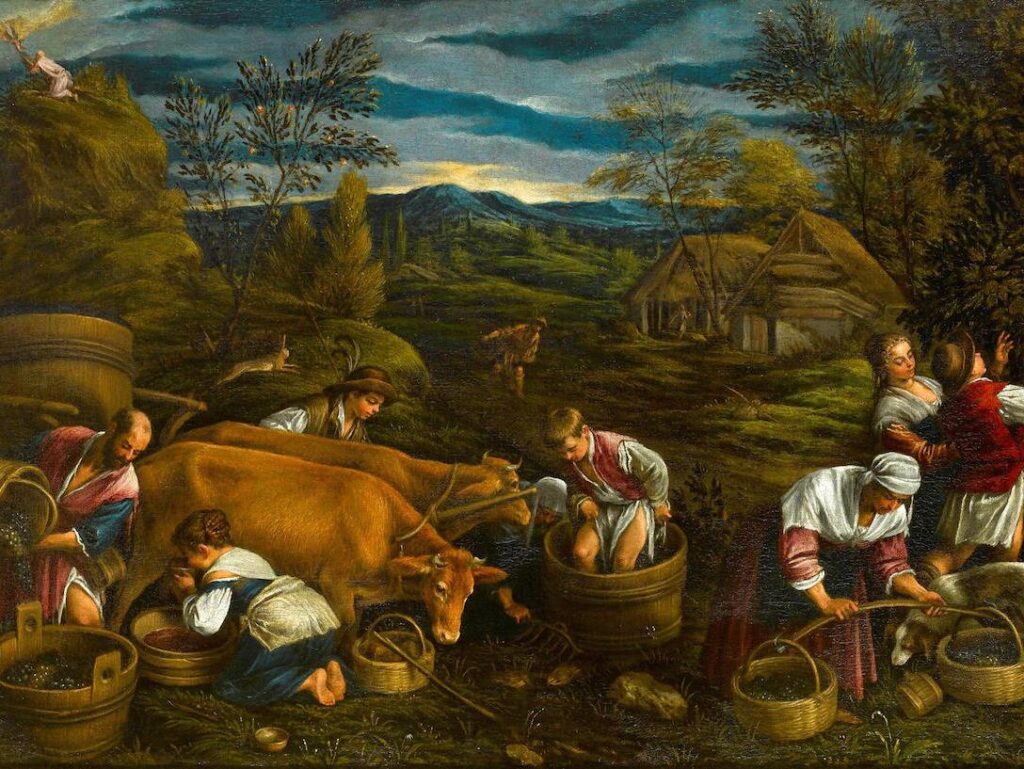
Instead, the peasant production always remained in the Mediterranean area, such as Italy, where the vine grows luxuriantly without too much effort. It had already returned to good quantitative levels by the end of the Upper Middle Ages, with the resumption of trade. Almost all the Italian Municipal Statutes of the time were concerned with regulating the production of wine, duties and so on.
However, the refined Roman techniques were lost everywhere and there was a more primitive production. It will take centuries to recover much of this knowledge. A truly substantial transformation will be thanks to the discoveries and innovations of the second half of the nineteenth century.
Medieval viticulture was generally characterized by closed and protected vineyards, realized close to the villages and also within the walls of villages and cities. The spaces to be exploited were limited and therefore the cultivation of low vine training systems prevailed. From the Renaissance, with the return to open fields, the vine trained (“married”) to the tree will return to prevail in central Italy. As already told here in Roman times, one and the other form (with all the local variations) will never completely disappear in Italy. One or the other will prevail according to historical eras and local traditions.
Even in our territory, the vine and wine did not disappear even in the darkest times. The presence of the vineyards around Castagneto is mentioned since the first written document of the Early Middle Ages (754 AD) and in subsequent ones, with a certain increase in the seventeenth-century and, above all, the eighteenth-century noble properties.
I have grouped this long period because unfortunately we have no info on what viticulture and local wines of these times were like. We only know that it was a production essentially dedicated to local consumption, without further development due to the general difficulties of the territory at the time. There will only be a productive leap in the nineteenth century, but I will talk about this in a future post.
A peculiarity is that the Maremma peasants, alongside the production in the vineyards, still continued to use the wild grapes of the “Lambruscaie” for centuries, the aggregations of wild vines in our woods from which viticulture had originated thousands of years earlier (see here). As described by Emilio Sereni, there has almost never been a clear separation between the agricultural-pastoral environment and the natural one in Italy. I like to think that this tradition is not dead and is returning to the idea of agro-ecology that we are trying to apply to our day.
Let’s now see how the landscape and agriculture of our territory have been transformed over these long centuries, when the Maremma was still poor and wild.
Maremma of the hilly villages.
Between the final part of the Roman Empire and the beginning of the Early Middle Ages, there was a political vacuum, accompanied by barbarian raids and wars, that dramatically transformed our territory, like all of Italy. Between the sixth and eighth centuries, the area was almost depopulated and the settlements increasingly moved to the hills. They tried to escape the progressive advance of the coastal marshes but also to move away from the Via Aurelia, that was up to then the central axis of the territory but which by now had become the gateway to barbarians and armies.
People came back to live the pre-Roman places, where it was easier to protect oneself and hide, with nearby sources and woods for sustenance, as agriculture was no longer sufficient.
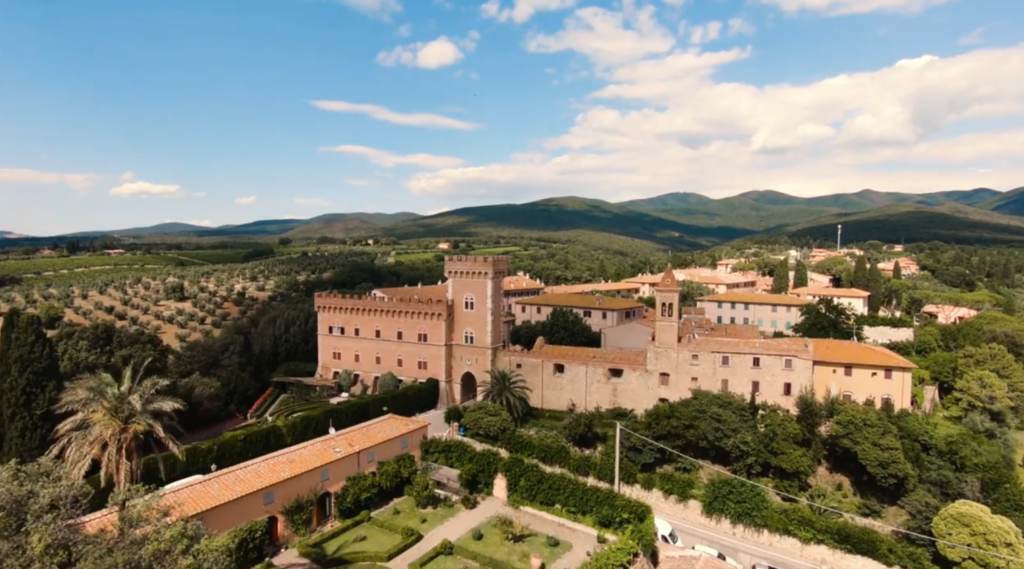
In fact, within a few generations, many of the knowledge and techniques were been lost in every field. Villages returned to being made up of huts. In some areas of Tuscany, people had even came back to live in the caverns. The use of stone will only be recovered towards the 9th-11th century, first for the defensive walls, the stately homes and then the rest.
In this period, the structure of the Maremma landscape was born, whose imprint is still visible today:
- The part of the coastal plain was dominated by marshes, reeds and scrubland.
- The foothill and first hill area was inhabited and cultivated. Here the settlements were formed. Later they became medieval villages and castles. The crops were placed around the villages. Closer to the houses (and later also within the walls) there were vineyards, vegetable gardens, olive trees and other fruit trees, well protected from wild and non-wild animals, as well as humans. Cereals and other crops (such as textile fibers) were grown in larger spaces, a little further away from the villages. The individual plots were called mansi. they were on the different sides of the hills, to take advantage of the different exposures to the sun.
- The highest hills were instead dominated by woods, the true central axis for the life and economy of the time.
[one_third][info_box title=”” image=”” animate=””]The Lombard dominion began in the 6th century; the local power center of the duchy was in Lucca. In 730 A.D. around, a more local lord was appointed, the count Ratcauso, sent to the territory especially with the task of defending mineral resources from pirate attacks. Castagneto is mentioned for the first time in a document dated 754 AD, in the list of assets given to the nascent Monteverdi Abbey, founded by Ratcauso’s son, Walfredo. Bolgheri is mentioned for the first time in a papal bull of 1075, with the name of “Sala del Duca Allone” (Duke Allone’s House), when the Franks had already taken over the Lombards. The presence of the castle is reported in 1158. Other castles were built on the intermediate hills: Castiglioncello (Little Castle) of Bolgheri and that of Segalari.
The actual few remains of the Donoratico Tower (not the current Donoratico village, which was born at the end of the 19th century) mark a site of very long residential stratification. Do you remember that I already talked about it in the Etruscan era and then in the Roman one (here)? Archaeologists have also found the remains of huts from the early Lombard period (called grubenhaus), from around the middle of the 8th century. Later the village of huts became a small fortified village and then a castle. This place was finally abandoned in the 16th century, perhaps following a siege or a plague (or both). This definitive abandonment, after millennia of housing continuity, remains a mystery to scholars.[/info_box][/one_third]
The new hillside settlements almost never included religious buildings. The churches mostly remained where they were in the Late Empire, on the plain, near the main Roman roads. This is another typical feature of the Tuscan countryside landscape: hilly villages and lowland churches, where inhabitants of different settlements met. Only later, after the IX-X century, the churches will enter the villages, built by the new lords as a sign of prestige.
Maremma of the woods
At this time, the forest recovered a large part of the territory throughout Europe; this phenomenon lasted at least until the tenth century. The forest became the center of the economy, due to a now secondary agriculture. In our area, where agriculture never developed much at least until the nineteenth century, the forest remained central for a long time. Even today it dominates a large part of our hills and the culture of the territory.
Wood was collected for all uses, first only for subsistence. Then it became an important economic resource, whose monopoly was in the hands of governments and their feudal lords. Timber and other products were transported by sea from localities that were natural ports along the coast, often located at the outlets of streams: Renaione, Seggio, Bassa, Paradù. Today they are beautiful beach places.
Wood was collected for all uses, first only for subsistence. Then it became an important economic resource, whose monopoly was in the hands of governments and their feudal lords. Timber and other products were transported by sea from localities that were natural ports along the coast, often located at the outlets of streams: Renaione, Seggio, Bassa, Paradù. Today they are beautiful beach places. In the woods they hunted and gathered spontaneous fruits. Here there were many chestnut groves (it is not a coincidence that the capital of our municipality is called Castagneto, that means “chestnut grove” in Italian), much more than today. The oaks gave acorns, used for animals but also for humans. The manna was obtained from the manna ash tree, a sweetener extracted for centuries in Maremma. This production will end at the beginning of the nineteenth century, when the consumption of imported cane sugar became common. Then, there were various fruits: blackberries, strawberry trees fruit, mushrooms, etc. The forest was for centuries the reign of the charcoal burners, both for domestic production and for the supply of iron smelting furnaces, one of the main economic resources of our lands since ever.
Livestock were mostly raised in the wild in the woods and uncultivated pastures. Pigs were predominant, left in the woods almost all year round and only put in the shed in winter. For a long time, they were the main source of fat, replacing olive oil, whose cultivation was in decline after the Roman era. The semi-swampy woods of the coastal area were instead suitable for the wild breeding of buffaloes, managed by herders and the typical Maremma herders on a horse, called “butteri” (“buttero“ in the singular form). The presence of the wild buffalo is very ancient, evidenced at least in Roman times. Yet, the French naturalist Buffon wrote, in the 18th century, that the buffalo was introduced into Italy by the Lombards and this theory is reported in various texts. The buffaloes wandered around our plain until the early decades of the nineteenth century, when people switched to breeding only in the stables. Today they have completely disappeared.
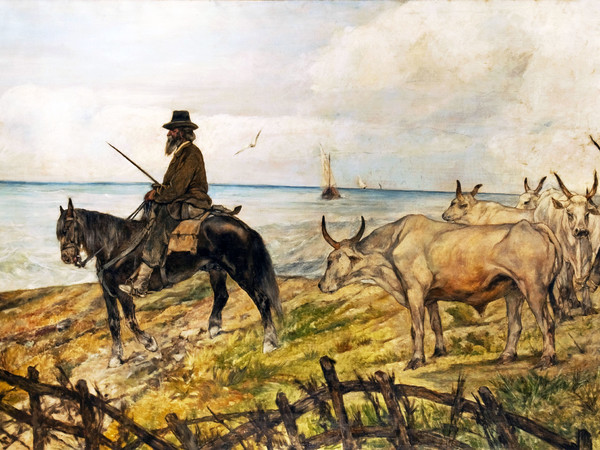
Maremma of peasants and nobles
The first aggregation of the villages, born in the period of power vacuum, originated equal peasant communities, where agriculture was often managed on a community basis or for families.
The transformation of the villages into fortified ones took place more or less between the 9th and 11th centuries, with the reaffirmation of a hierarchy of local power. According to scholars, some figures induced the weakest families to sell their properties in exchange for protection, accumulating wealth, prestige and decision-making positions over time. The centralization also included agricultural lands, with the birth of landed property, which became increasingly large, organized around the curtes (courts). The manorial farm was similar to the villa of the late Roman Empire (which I explained in the final part of this article). It was divided into small plots, “mansi“, entrusted to the peasants. A part of the fields was managed directly by the lord, with the work of servants and the forced work of the farmers.
Sharecropping, which will have a central role in much of Tuscany starting from the year one thousand, spread here very late, not before the 18th-19th century. The farmers of the Maremma have almost never lived in the countryside, except in recent times, also due to the frequent pirate raids, as evidenced by the many watchtowers scattered along the coast. The peasants worked in the fields during the day and returned to the safety of the fortified walls of the village at night. This ancient use will long deprive them of the right to a farmhouse and livestock by the lord.
The rampant poverty and the very long feudal setting have polarized the local social classes for centuries, not allowing for a long time the birth of intermediate classes that, everywhere, have been promoters of the transformations and developments of the territories.
[one_third][info_box title=”” image=”” animate=””]At the end of the Lombard and Carolingian age, new protagonists assert themselves along our coast: the families of the counts (Aldobrandeschi, Ardengheschi, Gherardeschi, etc …) and the bishops of the Maremma dioceses.
The Gherardesca counts begin their certain history in the mid-twelfth century, when the territory passed under the Republic of Pisa, and they maintained power even with the subsequent passage under the Florentine Republic (early fifteenth century). The three villages of our territory became autonomous municipalities in this period: Donoratico (not the current one, but the ancient one on the hill) (1407), Bolgheri (1409) and Castagneto (1421), in continuous conflict with the count. His residence was the castle of Castagneto and for this reason it became the capital of the Community.[/info_box][/one_third]
Since all the lands (or almost) belonged to the counts, the access to the goods of the territory by people was regulated by the “civic uses”, use rights by the inhabitants for grazing, gathering in the woods, fishing, etc. Some were direct descendants of the Roman-era rights on the public property, others were novelties. For example, the poors picking (“ruspo“) was allowed after the owner’s harvest in the chestnut grove. There was the “ius pascendi“, which allowed the livstock grazing on the land where the owner had already harvested. The “ius lignandi” made possible to collect some wood for family use in the woods of the lord or the municipality. The hunt was never possible, especially big game, which remained exclusive to the lords. The conflict over the use rights between local communities and noble families was the occasion of numerous disputes and clashes up to the mid-nineteenth century.
From the thirteenth century onwards, poverty and very strong social inequalities led to the birth of brigandage in Maremma. The Florentine deputy Oreste Massari, in the nineteenth century, defined it as “the savage and brutal protest of misery against ancient and centuries-old injustices.” The end of the Maremma brigandage was marked by the killing of the last greatest brigand, Domenico Tiburzi, in 1896.
Maremma of transhumance.
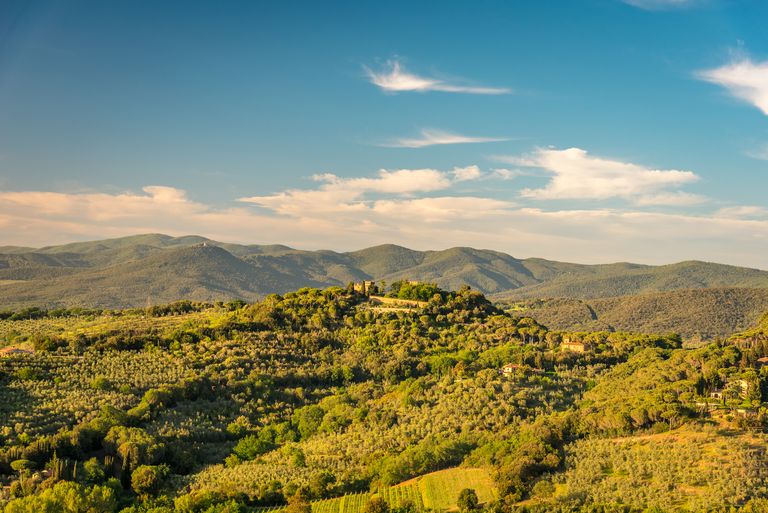
However, the period of relative peace of the early Middle Ages led to an increase in the population throughout Italy and a contraction of the woods in favor of agriculture. In Maremma, however, this good moment did not last long and did not have many positive effects. For example, nothing was done to reclaim the marshy areas which, on the contrary, expanded even more after the political decline following the defeat of Pisa in the 13th century.
The beginning of the Little Glaciation, at the beginning of 1300, brought famines and epidemics, such as that of the Black Plague. Tuscany was hit hard. The population decreased by 80% In Maremma. The most striking case was Grosseto, which increased from 1200 to 100 inhabitants. In Castagneto the population was practically halved
The uncultivated places and the woods have always been used for pastoralism and transhumance but from the Late Middle Ages, with the lowering of the population, this became a real business for governments and their feudal lords. The rent of the pastures expanded, influencing in a decisive way the lack of agricultural development of the Maremma.
The flocks arrived in the north Maremma from internal areas of Tuscany (Casentino, Mugello, Lucca), even from Bologna and Perugia, attracted by the local mild climate, from late autumn to early spring. A tax was paid for each animal, regulated by the “Customs of pastures”.
This economy was increased even more from the sixteenth century onwards. The landscape was more and more modified by the increase in transhumant flocks and by the use of fire for their enlargement. The great spread of the Mediterranean scrub, that still exists today on the hills, is a sign of a very unnatural environment, the result of constant human action.
[highlight background=”#B2BA97″ color=”white”]The Mediterranean scrub is an intermediate phase of the evolution of spontaneous vegetation in our environment. The cycle steps are as follows, if no external disturbances occur. After a fire, herbaceous plants are reborn and the prairie is formed. After that, small shrubs develop (such as phyllirea, thyme, cistus, rosemary, etc.). In land where these shrubs are interspersed with numerous rocks and the cycle will not go on, there is the garrigue (“gariga”). When shrubs become predominant, we have the low scrub (“macchia bassa”). Then, higher shrubs can take over (strawberry tree, myrtle, spiny broom, mastic tree, etc.), which form the tall scrub (“macchia alta”), the one that is commonly identified more with the name of Mediterranean scrub. Among these tall shrubs, some trees become more and more numerous (downy oak, holm oak, Aleppo pine, etc.). A mixed formation is born, in Italian “forteto” (I haven’t find an English term). Then, the trees become more and more predominant and we arrive at the final evolution, the Mediterranean wood.[/highlight]
Maremma which, with difficulty, starts to become agricultural
[one_third][info_box title=”” image=”” animate=””]The Florentine Republic then became the Medici Grand Duchy (1569), but the situation did not change much in Maremma and the same feudal settings were maintained. In 1737, the Habsburg-Lorraine dynasty took over the leadership of the re-named Grand Duchy of Tuscany. Towards the end of the century, a first era of reforms began. Some contributed a little to stirring the stagnant social situation and finally led to the birth of a new (small) class of agricultural owners. From 1799 to 1814, Tuscany was occupied by the French. This led to the abolition of the fiefdoms and the counts became real owners. After the return, the Grand Duchy of Tuscany tried to stimulate the cultivation of uncultivated land, yet encouraging the large land ownership.[/info_box][/one_third]
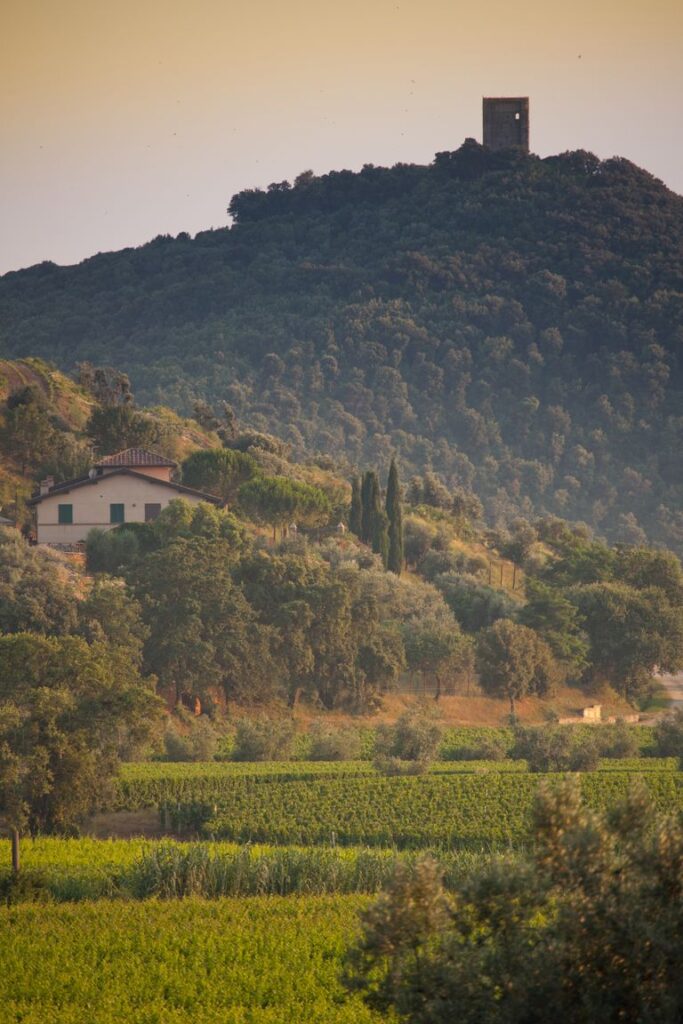
In the seventeenth and eighteenth centuries, the counts, due to the low rents of the lands, were also pushed to make them pay more with rents or transfers, which gave way to an initial expansion of agriculture. It was a timid beginning: in fact, still in the mid-eighteenth century the plain was largely occupied by wooded and marshy areas, the hills with woods and pastures.
The counts of Bolgheri increased the rents to the peasants. So, the farmers began the first deforestations near the village, for agricultural purposes. There was a very unfavorable sort of sharecropping (“mezzadria“). So, they weren’t called “mezzadri” but “mezzaioli“: they had to divide the products in half with the owner but without the right to a farmhouse and livestock. Another type of contract, whose name has remained in the local toponyms, was the “terratico“, in which the agreement was that for each sack of wheat the peasants had for sowing, the owner had two sacks of the product back. At the end of the 1600s, the count took back some of the rented land, to begin to take care of agriculture himself.
Instead, in the area around Castagneto, under a different branch of the Gherardesca family, there were another kind of agricultural contract, called “livello“. It was a type of agrarian contract born in the Lombard period, similar to the Roman emphyteusis. It was a more advantageous rent for the farmer, often of a long duration, with which the lease-holder fully enjoyed the property in exchange for a money rent. There was an obligation to improve the propriety but also the possibility of redeeming the property or selling the rent contract. In fact, it paved the way for the born of a new class of landowners.
First “livello”-contracts date back to the seventeenth. In 1784, the Grand Duke Pietro Leopoldo rented out as “livello” various ecclesiastical and community properties. In 1788, the count della Gherardesca gave various lands as “livello” to the Castagneto’s inhabitants in exchange of the end of the use rights. The last contracts dates back to 1849, when the count ceded several lands to the municipality which he then, in turn, ceded to the citizens. For each “livello”-contract, there was a transformation of the landscape, with the growth of agricultural crops.
So, agriculture, up to then practically subsistence, finally began to grow. The classic Mediterraenan triad was mainly cultivated: wheat, vines and olive trees. At the end of the eighteenth century, the cultivation of corn also developed, brought by seasonal workers called “Lombard” (although they mainly came from the Tuscan-Emilian Apennines).
This timid agricultural increase, however, was not easy: even nature seemed against. For almost the entire eighteenth century, the region was periodically invaded by locusts, a disconcerting biblical catastrophe, never happened before and, so far, never repeated (fortunately). In Piombino, on 23 June 1711, around 6.00 pm, a dark mass appeared on the sea and a cloud of locusts quickly covered the whole countryside. The invasions of grasshoppers repeated themselves periodically until 1786, spreading up to Castagneto and Sassetta, south to Massa Marittima and Gavorrano, destroying numerous cultivated lands.
In the second half of the eighteenth century, the grand duke pushed for the construction of the first farmhouses (“casali“) of our territory. [info_box title=”” image=”” animate=””]A great estate was divides in smaller parts, called “poderi” in Tuscany. Each “podere” was entrusted to a peasant family, who lived in the “casale” (farmhouse). [/info_box]Unfortunately, to limit costs, the remains of abandoned buildings were looted. Thus, all the still existing finds from ancient times disappeared, such as the last original stretches of the Via Aurelia and the remains of Roman villae (farms). Do you remember the tombstone I told you about here? It was found in the wall of a stable. In the mid-nineteenth century the remains of the Roman villa called “Of the Mosaic” disappeared in this way (see here). The same happened for the remains of medieval buildings such as the abbey of Saint Mary in Aschis, Saint Columban, parts of the Castle of Donoratico (at the time, the remains were much larger; today, there are only the ruins of a tower), etc.
Accused by the Grand Duke of keeping their lands badly, the counts also began to do the first works of reclamation of the marshy areas and improvement of the roads. So, at the end of the eighteenth century, construction began on what will become the famous cypress boulevard of Bolgheri.
Here we stop, on the threshold of the period of the greatest transformation of our territory. We will then see how the nineteenth century was the century of the first important expansion of viticulture in our area.
This is where the era of the harsh and wild Maremma formally ends for our territory.
The expansion of reclamations and the development of specialized crops in the nineteenth century definitively transformed this territory into agricultural. Therefore, it was not considered longer part of the Maremma, according to the definition of the time. The inhabitants were happy, because this membership was considered dishonorable at that times:
“despising the ancient and defamed name with a good reason” (Beccarini, 1873).
“Il paesaggio come risorsa”, di Mauro Agnoletti, Edizioni ETS, 2009.
“Vini Bolgheri e altri vini di Castagneto”, di Luciano Bezzini, Enrico Guagnini. Casa Editrice Le Lettere, 1996.
“Dominare e gestire un territorio: ascesa e sviluppo delle signorie forti nella Maremma toscana centrosettentrionale tra X e XII secolo”, Giovanna Bianchi, Archeologia Medievale, XXXVII, 2010, pag. 93-103.
“Castello di Donoratico, i risultati delle prime campagne di scavo (2000-2002), a cura di Giovanna Bianchi, Ed. All’Insegna del Giglio, 2004
“Il discorso del vino”, di Pietro Stara, ed. ZeroinCondotta, 2013
“L’insediamento altomedievale nelle campagne toscane”, di Marco Valenti, Ed. All’Insegna del Giglio, 2004
“Storia del paesaggio agrario”, di Emilio Sereni, Ed. Laterza, 1961